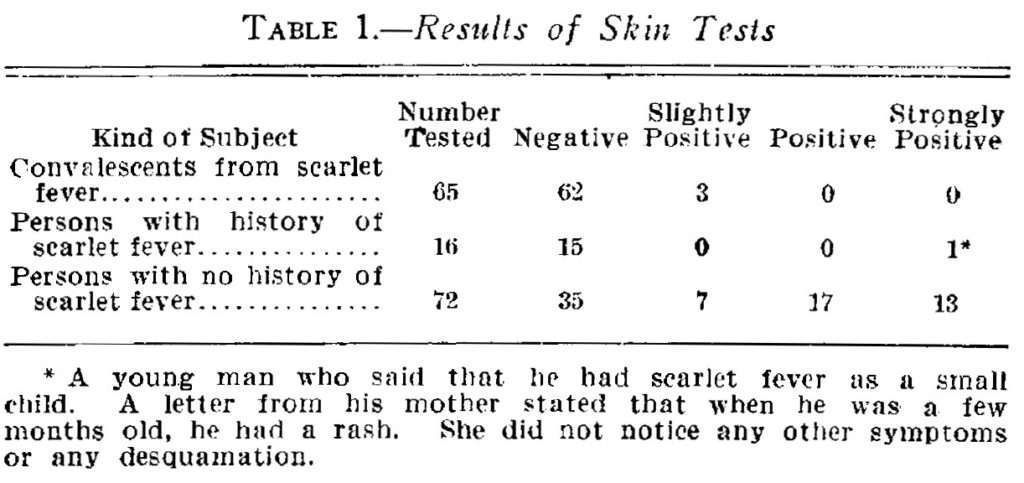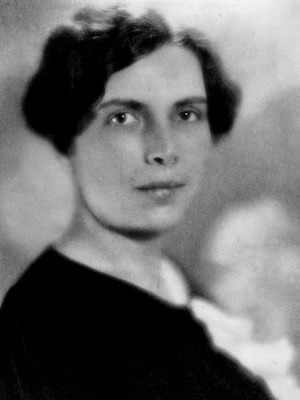Gladys Dick
Gladys Rowena (née Henry) Dick (1881 – 1963) was an American physician, pathologist and vaccinologist.
George and Gladys Dick Isolated haemolytic streptococcus as the ‘causative agent of scarlet fever’; isolated the causative toxin; developed a skin test to determine susceptibility to scarlet fever; used the toxin in larger doses to develop active immunity; and developed a vaccine for scarlet fever
Nobel prize nominee and co-developer of a vaccine for scarlet fever with her husband George Frederick Dick (1881-1967).
Gladys and George adopted two children of their own and were active in child welfare. In 1918 Gladys founded the Cradle Society in Evanston, Illinois, one of the first medical professional organizations to facilitate the adoption of children.
Biography
- Born Gladys Rowena Henry on 18 December 1881 in Pawnee City, Nebraska
- 1900 – BS in zoology, University of Nebraska
- 1907 – MD, Johns Hopkins Medical School
- 1908 – Commenced biomedical research at the University of Berlin
- 1911 – Commenced work at the University of Chicago and contracted scarlet fever while working at Children’s Memorial Hospital
- 1912 – Research position at the University of Chicago, studying kidney pathology and the etiology of scarlet fever with George Frederick Dick (1881-1967)
- 1914 – Married GF Dick, worked as a pathologist at Evanston Hospital
- 1918 – Founded the first professional adoption association in America, the Cradle Society
- 1914-1953 John R. McCormick Memorial Institute for Infectious Diseases, Chicago
- 1923 – Isolated haemolytic streptococcus as the ‘causative agent of scarlet fever’
- 1924 – With her husband, developed a skin test (the ‘Dick test’) to determine susceptibility to scarlet fever
- 1925 – Nominated for the Nobel Prize for work in developing the toxin and skin test
- 1926 – Mickle Prize, University of Toronto
- 1933 – Cameron Prize for Therapeutics, University of Edinburgh
- 1953 – Retired
- Died 21 August 1963 in Palo Alto, Califormia
Medical Eponyms
Dick Test (1924)
In 1923, Gladys and George Dick isolated haemolytic streptococcus as the ‘causative agent of scarlet fever’. They proceeded to develop ‘Experimental Scarlet Fever‘ in test patients with an apparently pure culture of a haemolytic streptococcus isolated from a case of scarlet fever. The Dick’s isolated the specific causative toxin and used this in a skin test to determine susceptibility to scarlet fever (strongly positive – at risk of developing; negative – conferred immunity by prior exposure).

The filtrate of the culture that produced experimental scarlet fever, when used in the proper dilution, gave positive or strongly positive skin tests in 41.6% of the persons who had no history of scarlet fever. All of the convalescent scarlet fever patients tested showed negative or only slightly positive reactions. The action of the filtrate on the skin was inhibited by convalescent scarlet fever serum mixed with the filtrate before it was injected, or given intramuscularly before the test was made. In two instances in which it was possible to observe the test before and after an attack of scarlet fever, it was positive before the attack, and negative during convalescence. in conclusion: The skin test described bears a specific relation to immunity to scarlet fever.
Dick, Dick 1924
Larger doses of the toxin was found to provide active immunization. George and Gladys Dick went on to develop an antitoxin for those who had already developed scarlet fever, and later developed a vaccine for the disease.
Major Publications
- Dick GF, Dick GH. Immune Reactions in Scarlet Fever, in Antigenic Properties of Bacteria Found in Scarlatina, The Journal of Infectious Diseases, 1916; 19(4): 638–646
- Dick GF, Dick GH. Experimental Scarlet Fever. JAMA. 1923;81(14):1166-1167
- Dick GF, Dick GH. A skin test for susceptibility to scarlet fever. JAMA. 1924; 82(4): 265-266.
- Dick GF, Dick GH. The etiology of scarlet fever. JAMA 1924; 82: 301–2.
- Dick GF, Dick GH. Scarlet fever. American Journal of Public Health. 1924; 14(12): 1022-1028
- Dick GF, Dick GH. Scarlet fever. 1938
Controversies
Criticized for patenting their methods of producing the toxin and an antitoxin. The discovery of the skin test unfortunately led to a long series of lawsuits over their attempts to receive patents for the method of producing toxins and antitoxins (which some believe cost them the Nobel Prize), even though they were to derive no personal gain. This became a moot point with the arrival of the antibiotic era…
References
- Okell CC, Parish HJ. The Dick test in scarlet fever. Lancet, April 4 1925: 712
- Obituary. Dick, Gladys Rowena Henry. JAMA 1963;186:1186.
- Ostör AG. Immortal women: essays in medical eponyms–part II. Am J Surg Pathol. 2001; 25(10): 1326-1333.
- Portrait: Gladys Rowena Henry Dick (1881-1963) Smithsonian Institution Archives
- Bibliography. Dick, Gladys Henry. WorldCat Identities
Graduated from Cardiff Medical School in 2017 with MBBCh and BSc in Psychology and Medicine. Currently working as a doctor in the emergency department at Sir Charles Gairdner Hospital in Perth, Australia.


